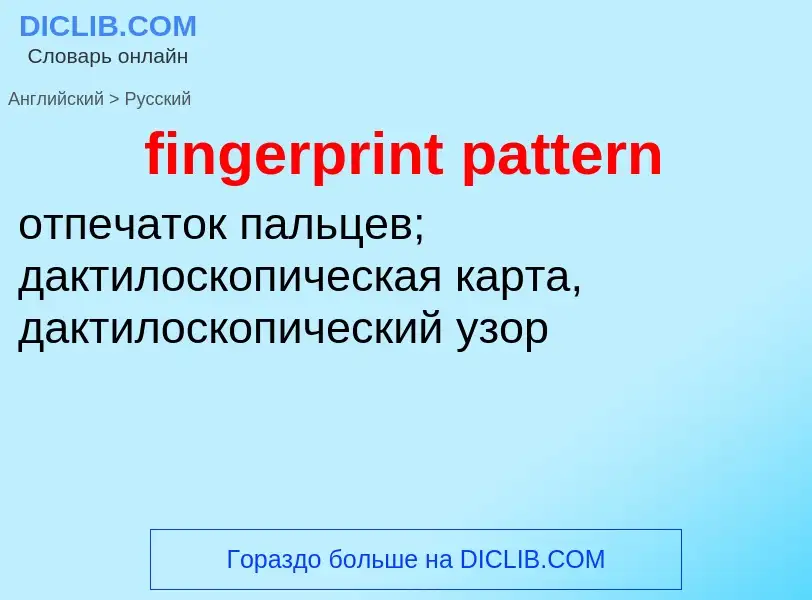Перевод и анализ слов искусственным интеллектом ChatGPT
На этой странице Вы можете получить подробный анализ слова или словосочетания, произведенный с помощью лучшей на сегодняшний день технологии искусственного интеллекта:
- как употребляется слово
- частота употребления
- используется оно чаще в устной или письменной речи
- варианты перевода слова
- примеры употребления (несколько фраз с переводом)
- этимология
fingerprint pattern - перевод на русский
общая лексика
считыватель отпечатков пальцев
устройство ввода отпечатков пальцев в компьютерную систему для распознавания
Смотрите также
строительное дело
раскрой листового материала (операция)
['pætnmeikə]
существительное
общая лексика
модельер
модельщик (в металлургии)
металлургия
модельщик
['pætnrekəg'niʃ(ə)n]
общая лексика
распознавание образов
идентификация графических изображений с помощью компьютерных технологий. Используется, в биометрических методах контроля доступа для распознавания голоса, отпечатков пальцев, фотографий и. п
Определение
Википедия

Peptide mass fingerprinting (PMF) (also known as protein fingerprinting) is an analytical technique for protein identification in which the unknown protein of interest is first cleaved into smaller peptides, whose absolute masses can be accurately measured with a mass spectrometer such as MALDI-TOF or ESI-TOF. The method was developed in 1993 by several groups independently. The peptide masses are compared to either a database containing known protein sequences or even the genome. This is achieved by using computer programs that translate the known genome of the organism into proteins, then theoretically cut the proteins into peptides, and calculate the absolute masses of the peptides from each protein. They then compare the masses of the peptides of the unknown protein to the theoretical peptide masses of each protein encoded in the genome. The results are statistically analyzed to find the best match.
The advantage of this method is that only the masses of the peptides have to be known. Time-consuming de novo peptide sequencing is then unnecessary. A disadvantage is that the protein sequence has to be present in the database of interest. Additionally most PMF algorithms assume that the peptides come from a single protein. The presence of a mixture can significantly complicate the analysis and potentially compromise the results. Typical for the PMF based protein identification is the requirement for an isolated protein. Mixtures exceeding a number of 2-3 proteins typically require the additional use of MS/MS based protein identification to achieve sufficient specificity of identification (6). Therefore, the typical PMF samples are isolated proteins from two-dimensional gel electrophoresis (2D gels) or isolated SDS-PAGE bands. Additional analyses by MS/MS can either be direct, e.g., MALDI-TOF/TOF analysis or downstream nanoLC-ESI-MS/MS analysis of gel spot eluates.






.jpg?width=200)
![Fitting a nettle/canvas-fabric on a [[dress form]] Fitting a nettle/canvas-fabric on a [[dress form]]](https://commons.wikimedia.org/wiki/Special:FilePath/Fitting muslin dummy.jpg?width=200)
.jpg?width=200)



![tailor's tack]] with thread to mark a pattern on fabric before cutting the fabric tailor's tack]] with thread to mark a pattern on fabric before cutting the fabric](https://commons.wikimedia.org/wiki/Special:FilePath/Basting pattern markings.jpg?width=200)



![The face was automatically detected]] by special software. The face was automatically detected]] by special software.](https://commons.wikimedia.org/wiki/Special:FilePath/800px-Cool Kids of Death Off Festival p 146-face selected.jpg?width=200)
